Introduction
Hello, dear readers!
In the vibrant world of pet ownership, understanding every nuance of your furry companion’s behavior is not just a privilege, but a necessity. Today, we are diving deep into a topic that is often surrounded by questions and concerns – the cat heat cycle. Whether you are a new cat parent or a seasoned one, grasping the intricacies of the cat heat cycle can be a game-changer in ensuring the well-being of your feline friend. So, let’s embark on this enlightening journey together!
Definition of Cat Heat Cycle
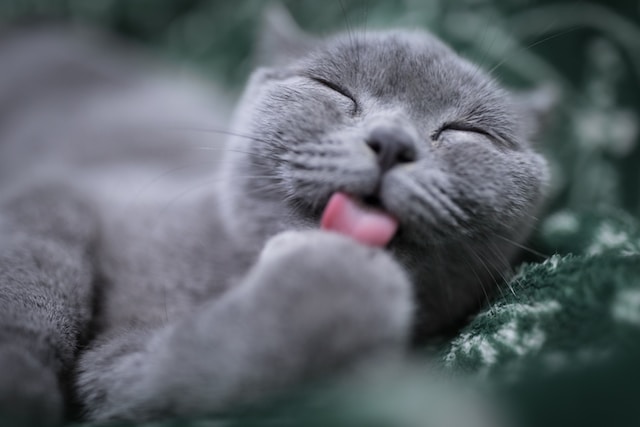
First things first, let’s demystify what the term “cat heat cycle” actually entails. In simple terms, a cat heat cycle, also known as estrus cycle, is a period during which female cats experience heightened levels of fertility and are receptive to mating. This cycle is a natural and recurring process, characterized by significant behavioral changes, including increased affection, vocalization, and a strong desire to venture outdoors. It’s a fascinating phase where you get to witness the primal aspects of your beloved pet, showcasing nature in its rawest form.
Importance of Understanding the Cat Heat Cycle
Now, you might be wondering, why is it so crucial to understand this cycle? Well, being well-versed with the cat heat cycle can significantly enhance your ability to cater to your cat’s needs during this time, fostering a more harmonious and loving relationship. Moreover, it aids in preventing unwanted litters, thereby promoting responsible pet ownership. Knowledge about this cycle also equips you with the tools to identify and manage any unusual behaviors or health issues promptly, ensuring your cat remains happy and healthy.
Furthermore, a deep understanding of this cycle can be a cornerstone in building a bond that is based on empathy and awareness, allowing you to navigate through this period with ease and confidence. After all, a well-informed cat parent is a great cat parent!
In conclusion, embarking on the journey to understand the cat heat cycle is not just beneficial, but essential in fostering a nurturing and loving environment for your feline companion. So, gear up, dear readers, as we delve deeper into this topic in our upcoming sections, where we will be your guiding light in mastering the art of cat parenting during the heat cycle.
Stay tuned, and remember, the journey of pet ownership is a beautiful one, filled with love, learning, and countless joyous moments!
Happy Cat Parenting!
Understanding the Cat Heat Cycle
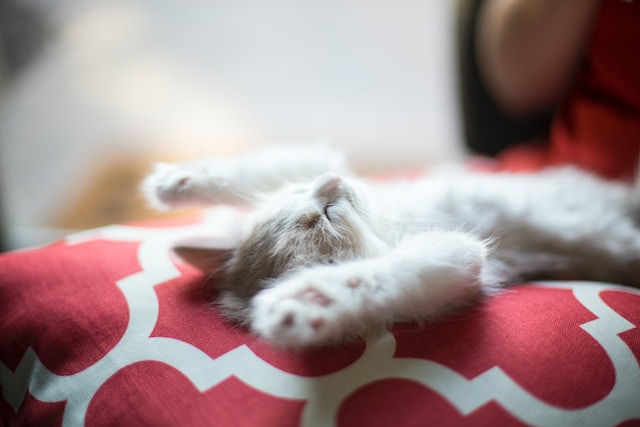
Hey there, fellow cat enthusiasts!
In the grand scheme of pet parenting, having a comprehensive understanding of the cat heat cycle is akin to holding a golden key that unlocks the secrets to a happy and healthy feline companion. Today, we are about to venture further into this captivating topic, shedding light on the duration and frequency of the heat cycle, seasonal variations, and age-related aspects. So, without further ado, let’s dive right in!
Duration and Frequency
First on our list is understanding the duration and frequency of the cat heat cycle. Now, brace yourselves as we delve into the nitty-gritty details that govern this fascinating phenomenon. Typically, a female cat’s heat cycle can last anywhere between a week to ten days, and it can occur every two to three weeks, especially during the breeding season. Yes, you heard it right! Your little furball could potentially be in heat several times within a single season, making it all the more essential to be well-prepared and informed. Remember, a well-timed visit to the vet can be a lifesaver during this period!
Seasonal Variations
Next up, we have the seasonal variations. If you’ve ever wondered why your cat seems to be in heat more frequently during certain times of the year, you’re about to find out why. Cats are seasonally polyestrous, which means they have multiple estrus cycles during the breeding season, typically between spring and fall. This is nature’s way of ensuring the survival of the feline species, aligning the heat cycles with the warmer months when the chances of kitten survival are highest. So, keep an eye out for those telltale signs as the seasons change!
Last but certainly not least, we delve into the age-related aspects of the cat heat cycle. Generally, kittens as young as four to six months can enter their first heat cycle, although it’s more common in cats around six to nine months of age. It’s a pivotal time in a young cat’s life, marking their transition into adulthood. Being aware of this can help you provide the necessary care and attention during this significant milestone in their life journey.
In conclusion, understanding the intricacies of the cat heat cycle is not just a testament to responsible pet ownership, but a journey of discovery that strengthens the bond between you and your feline friend. As we venture deeper into this topic in our upcoming segments, we promise to be your trusted guide, helping you navigate through this complex yet utterly fascinating world of feline reproduction.
Stay tuned for more insights, and remember, a knowledgeable cat parent is a fantastic cat parent!
To happier and healthier feline friendships!
Identifying Symptoms and Behaviors
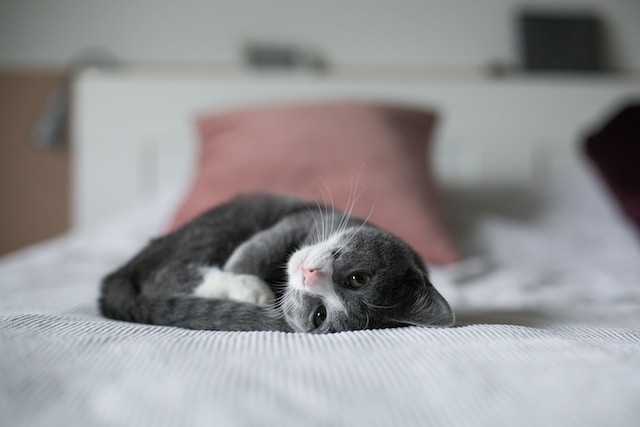
Hello, dear cat aficionados!
As we continue our enlightening journey into the world of feline reproduction, it’s time to delve deeper and unravel the mysteries surrounding the symptoms and behaviors exhibited during the cat heat cycle. Being able to identify these signs is not just a skill, it’s an art that can transform your relationship with your feline friend, making it more harmonious and fulfilling. So, let’s gear up and explore the common symptoms, behavioral changes, and the differences between male and female cats in heat. Trust us, it’s going to be a riveting ride!
Common Symptoms
First and foremost, let’s talk about the common symptoms that are telltale signs of a cat in heat. Picture this: your usually calm and composed kitty suddenly becomes a bundle of energy, displaying an increased affection towards you and even objects around the house. You might notice her rolling on the floor, raising her hindquarters, and marking her territory more frequently. And oh, the vocalizations! Your cat might start to vocalize more, with a series of yowls and meows that are hard to ignore. Recognizing these symptoms early on can be a game-changer in managing your cat’s heat cycle effectively.
Behavioral Changes
Moving on, we have the behavioral changes that accompany this period. It’s like watching a dramatic transformation unfold right before your eyes. Your feline friend might become more restless, pacing around the house with an unquenchable curiosity. You might also notice a surge in affectionate behaviors, such as head-butting and nuzzling. It’s essential to approach these behavioral changes with empathy and understanding, as your cat navigates through this natural, albeit intense, phase of their life cycle.
Male vs. Female Cats in Heat
Now, let’s delve into the fascinating world of male vs. female cats in heat. While female cats exhibit the symptoms we’ve discussed above, male cats have their own set of behaviors during this time. They become more territorial, marking their surroundings with a strong-smelling spray to attract potential mates. You might also witness increased aggression and a relentless pursuit of female cats in heat. Understanding the differences between the two can help you tailor your approach and provide the right kind of support and care during this period.
In wrapping up, we hope this segment has equipped you with the knowledge to identify the symptoms and behaviors associated with the cat heat cycle accurately. Remember, being attuned to these signs is your first step towards becoming a feline whisperer, fostering a deeper connection with your beloved pet.
Stay tuned for more eye-opening insights in our next segment, where we continue to unravel the captivating world of feline reproduction. Until then, happy pet parenting!
To a deeper understanding and a stronger bond with your feline friends!
Managing Cats in Heat
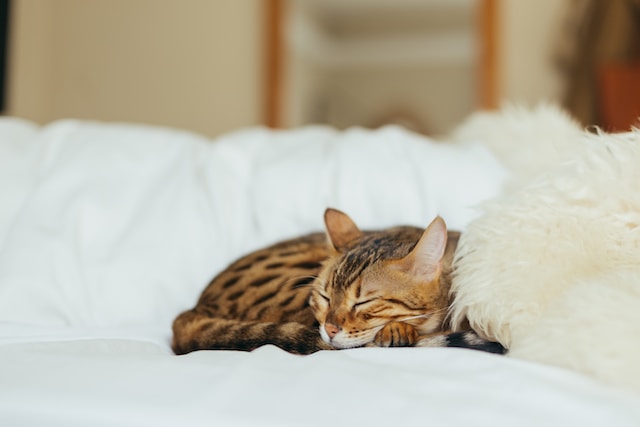
Hey there, fellow cat enthusiasts!
Navigating the tumultuous waters of a cat’s heat cycle can sometimes feel like a daunting task. But fear not, because we are here to guide you every step of the way! In this segment, we are going to delve into the nitty-gritty of managing cats in heat. From offering help to finding remedies and solutions, to handling aggressive and loud behaviors, we’ve got it all covered. So, let’s dive right in and equip ourselves with the knowledge to become the ultimate cat whisperers!
How to Help a Cat in Heat
First things first, let’s talk about how to help a cat in heat. It’s essential to approach this with a gentle and understanding demeanor. Your feline friend is going through a lot, and your support can make a world of difference. Ensure that your home environment is calm and serene, offering plenty of opportunities for your cat to relax and unwind. You might also consider setting up a cozy corner with soft bedding and toys to keep her entertained. Remember, a little love and affection go a long way during this time!
Remedies and Solutions
Next up, we have the remedies and solutions that can be a lifesaver during this period. One of the most effective ways to manage a cat in heat is to consult with a veterinarian for possible medical interventions. Additionally, you can explore natural remedies such as creating a calming herbal infusion or using pheromone diffusers to help soothe your cat’s nerves. It’s all about finding the right balance and offering a safe haven for your feline companion.
Managing Aggressive and Loud Behaviors
Lastly, let’s tackle the challenge of managing aggressive and loud behaviors. It’s not uncommon for cats in heat to become more vocal and even display signs of aggression. In such scenarios, it’s crucial to remain patient and avoid any form of punishment. Instead, try to divert their attention with interactive toys or engaging play sessions. And remember, if things get too loud, a quiet room where your cat can retreat and find solace can be a real lifesaver.
In conclusion, managing cats in heat is indeed a journey filled with challenges, but with the right knowledge and approach, it can also be a rewarding experience. We hope this guide has empowered you to navigate this journey with confidence and ease.
Stay tuned for more insightful tips and tricks in our upcoming segments. Until then, happy cat parenting!
To a harmonious and loving relationship with your feline family member!
Spaying and Neutering
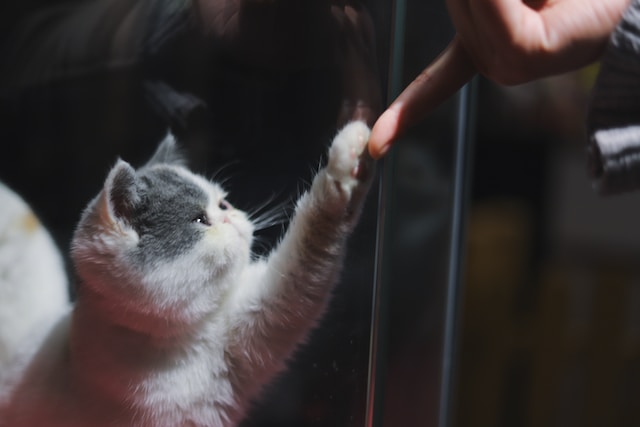
Hello, dear readers!
Today, we are venturing into an essential chapter in the life of every responsible cat owner – the topic of spaying and neutering. This process not only aids in controlling the feline population but also brings about a plethora of benefits for your beloved pet. So, without further ado, let’s unravel the layers of this significant aspect of pet care, addressing the benefits, the concerns, and the behaviors post the procedure. Trust us, this is a read that could potentially transform your pet’s life for the better!
Benefits of Spaying and Neutering
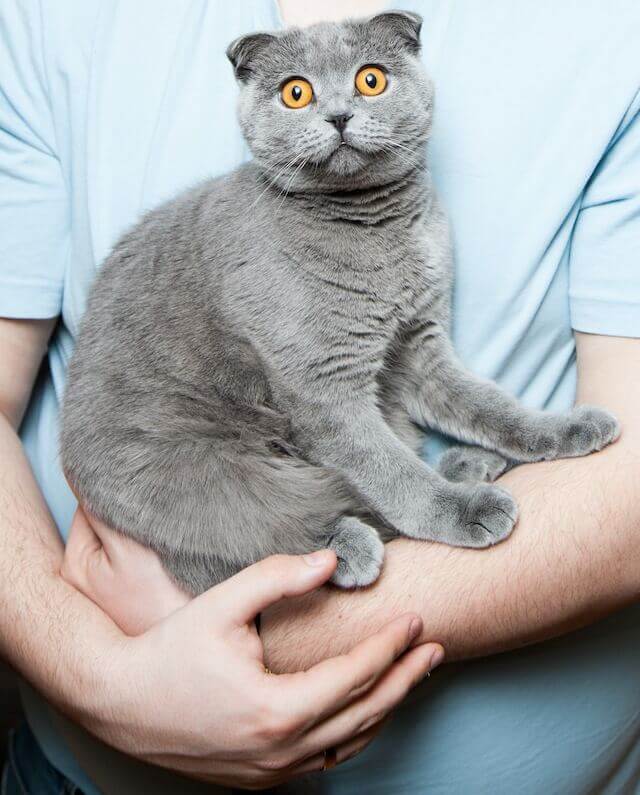
First on our list is the exploration of the manifold benefits of spaying and neutering. This procedure is a surefire way to prevent unwanted litters, thus playing a vital role in reducing the number of homeless cats. But that’s not all! Spaying and neutering can also curb undesirable behaviors such as spraying and yowling, making your life as a pet owner much more pleasant. Moreover, it has been proven to lower the risks of certain health issues, promising a longer and healthier life for your feline friend. It’s a win-win situation, don’t you think?
Concerns about Spaying Cats in Heat
Next, we delve into the concerns about spaying cats in heat. While the procedure is generally safe, spaying a cat during her heat cycle can pose some challenges. The heightened blood flow to the reproductive organs during this period can increase the risk of bleeding during surgery. Therefore, it’s imperative to have a detailed discussion with your veterinarian to weigh the pros and cons and make an informed decision. Remember, the safety and well-being of your pet should always be the top priority!
Pros
- Immediate End to the Heat Cycle: Spaying a cat in heat will immediately end the current cycle, providing relief to both the cat and the owner.
- Avoiding Future Cycles: As with spaying outside of the heat cycle, the procedure will prevent any future heat cycles and associated behaviors.
Cons
- Surgical Risks: The blood vessels in the reproductive organs become more engorged during the heat cycle, potentially increasing the risk of bleeding during surgery.
- Potential for Higher Costs: Due to the increased surgical risk, some veterinarians might charge more for spaying a cat in heat.
Post-Spaying Behaviors
Lastly, we touch upon the post-spaying behaviors that you might observe in your cat. After the procedure, it’s common for cats to experience a period of lethargy as they recover. You might also notice a decrease in aggressive and territorial behaviors, making for a more peaceful household. It’s essential to provide a quiet and comfortable space for your cat to recuperate, with easy access to food and water. And don’t forget, a little extra love and pampering can go a long way in aiding a speedy recovery!
In conclusion, spaying and neutering stand as a responsible and loving choice for pet owners, promising a host of benefits for both the cat and the community. We hope this guide has shed light on this vital topic, empowering you to make the best decision for your furry family member.
Stay tuned for more insightful guides on pet care. Until then, happy and responsible pet parenting!
To a future filled with happy, healthy, and well-cared-for felines!
Ensuring Comfort and Safety
Hey there, fellow cat enthusiasts!
In today’s segment, we are stepping into the vital territory of ensuring comfort and safety for our feline companions. As responsible pet owners, it’s our duty to make sure that our cats are not only happy but also safe, especially when the weather decides to go to extremes. So, buckle up as we guide you through the essential tips and solutions to protect your cats in hot weather and provide them with the best heating solutions during those chilly months. Trust us, your furry friend will thank you with purrs and cuddles!
Protecting Cats in Hot Weather
First and foremost, let’s talk about protecting cats in hot weather. As the mercury rises, it’s crucial to keep a vigilant eye on your feline friends. Ensure they have access to cool, shaded areas to prevent overheating. Hydration is key, so always have fresh water available to help them beat the heat. And don’t forget, never leave your cat in a parked car, as temperatures can skyrocket in a matter of minutes, creating a dangerous, if not fatal, environment. Remember, a little precaution goes a long way in ensuring the safety and well-being of your beloved pet!
Heating Solutions for Cats
Transitioning from the scorching heat, let’s shift our focus to the colder months and explore the best heating solutions for cats. As the temperature drops, our feline friends seek warmth and comfort. Investing in a quality heated cat bed or a heating pad can be a game-changer, offering them a cozy spot to curl up in. Moreover, consider setting up a cat house with proper insulation to shield them from the chilly winds. And here’s a pro tip: placing their bed near a sunny window can provide natural warmth during the day, making for a perfect sunbathing spot!
In wrapping up, we cannot stress enough the importance of adapting to the changing weather conditions to ensure the comfort and safety of your cats. With a little effort and investment, you can create a haven for your feline friend, where they can thrive all year round.
Stay tuned for more tips and tricks to elevate your pet parenting game. Until next time, keep those tails wagging and those purrs rolling!
To a future of happy, snug, and safe kitties!
Conclusion
Well, folks, we’ve embarked on quite a journey today, haven’t we? From understanding the intricate phases of a cat’s heat cycle to diving deep into the nuances of their behavior and well-being, we’ve covered it all. Now, as we draw this enriching journey to a close, let’s take a moment to recap the key points and sprinkle in some golden tips for all the responsible cat parents out there. Trust us, adhering to these guidelines will not only make your life easier but will also ensure a happy and healthy life for your feline friend.
Summary of Key Points
First and foremost, understanding the cat heat cycle is pivotal. Recognizing the signs and symptoms, and knowing how to manage them, can greatly enhance the quality of life for both you and your pet. Moreover, we delved into the vital topic of spaying and neutering, highlighting the immense benefits it brings along, not just for the health of your cat but also in curbing the stray population.
Furthermore, we ventured into the territory of ensuring comfort and safety for our cats, be it protecting them in hot weather or finding the perfect heating solutions for the colder months. Remember, a comfortable cat is a happy cat!
Tips for Responsible Pet Ownership
Now, let’s talk about responsible pet ownership. It goes beyond providing shelter and food. It’s about creating a loving, safe, and nurturing environment where your cat can thrive. Here are some golden tips to keep in mind:
- Regular Vet Visits: Ensure your cat has regular check-ups to monitor their health and nip any potential issues in the bud.
- Nutrition: Invest in high-quality cat food that meets all the nutritional requirements of your feline friend.
- Enrichment: Provide toys and activities that stimulate their mind and keep them active.
- Hygiene: Maintain a clean living space, including a clean litter box to prevent infections and diseases.
- Love and Affection: Last but certainly not least, shower your cat with love and affection. After all, a little love goes a long way!
In conclusion, being a responsible cat owner is a rewarding journey filled with purrs, cuddles, and unconditional love. So, embrace it with open arms and a big heart.
Here’s to a future filled with happy meows and content purrs!
Stay tuned for more insightful guides to elevate your pet parenting journey to the next level. Until then, happy pet parenting!
Leave a Reply